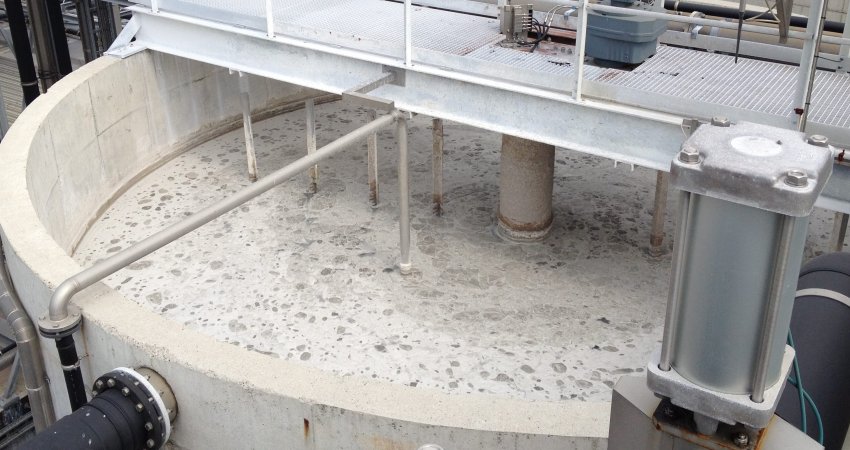Anaerobic water treatment
Due to the high levels of organic pollutants in wastewater, wastewater treatment can be an energy-intensive and therefore a costly affair. By using specific microorganisms, these organic pollutants can be efficiently converted into biogas, resulting in sustainable energy generation and energy-positive wastewater treatment.
Application
We combine UASB (Upflow Anaerobic Sludge Blanket) technology with our proprietary gas hoods to optimise the process. As a result, this technology is used not only for water flows produced by the food industry (potato processing industry, abattoirs, the dairy, sugar, alcohol and starch industries and breweries), but also from the paper and textile industries or in specific cases on municipal wastewater.
Process
The wastewater is fed at the bottom of a UASB reactor, where it brings the granular sludge in suspension. The wastewater flows through the bed of granular sludge, converting organic pollutants into biogas, which consists mainly of CO2 and CH4. Gas hoods, also known as three-phase separators are installed at the top of the UASB reactor. They capture the formed biogas and the treated water, making sure the granular sludge stays in the reactor.
Advantages
UASB technology is a robust, reliable method to significantly reduce the operational costs of water treatment. In addition, the biogas produced by this method can be used locally as a sustainable energy source for the production of heat and electricity, or it can be upgraded to green gas. Colsen can also advise & consult on biogas applications and purification.



Would you like to know more?
Ask
Jurgen
Jurgen Brekelmans, Managing Director




